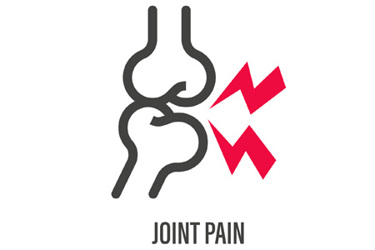New Cell and Gene Therapy Approaches to Osteoarthritis

By Erin Harris, Editor-In-Chief, Cell & Gene
Follow Me On Twitter @ErinHarris_1

Osteoarthritis (OA) is a chronic, progressive joint disease that affects over 30 million people in the United States, and it weighs heavily on the healthcare system with incremental costs nearing $137 billion a year. Treatment options are varied but rarely address the underlying root cause of the disease. At later stages, options might include addictive pain medicines or surgery, so physicians often struggle to find solutions to treat the pain associated with OA effectively and safely. This, along with a growing number of patients affected due to rising obesity rates and aging populations, magnifies the need for a new alternative solution.
According to The National Center for Biotechnical Information (NCBI), OA’s progression is slow, and it is mostly diagnosed midlife and often disturbs the knees, hips, feet, hands, and spine. Sex, age, obesity, occupation, and hereditary factors are risk factors that increase the opportunity for OA. Physical examinations involving X-rays and MRIs, joint fluid analysis, and blood tests are common tools for the diagnosis of OA. Indeed, one of the most debilitating effects of OA is the chronic pain associated with the condition, as even simple tasks like going to work, attending to daily tasks, and basic movements often become unmanageable.
NCBI further explains that OA is not an inactive degenerative disease, rather it is a dynamic disease caused by the imbalance between restoration and destruction of joints. OA is also associated with increased risk of comorbidity. As a result, this pain takes a significant toll on a patient’s quality of life and yet, available treatment options don’t address the underlying root cause of disease.
Enter Cell and Stem Cell Therapy
Stem cell therapy is seen as a potential new approach to the treatment of a range of chronic disease states, for example the use of mesenchymal stem cells for the treatment of OA. As OA progresses, observed structural changes include loss of cartilage thickness, subchondral sclerosis, periarticular bone formation and soft tissue changes including synovitis. The underlying pathobiology of OA can be regarded as an imbalance between proinflammatory catabolic and anabolic reparative pathways with a cytokine imbalance skewed toward proinflammatory molecules that include interleukin (IL)-1 and tumor necrosis factor (TNF). Mesenchymal stem cells (MSCs) are a promising source for the treatment of OA due to their multipotency for differentiation into chondrocytes and their ability to modulate the immune system.
According to NCBI, new therapeutic strategies for OA treatment have been intended to regenerate joint tissues and manage inflammation. Cell- or stem cell-based therapy has been developed as a new approach in regenerative medication. Autologous chondrocyte implantation (ACI) is an FDA-approved cell therapy for OA treatment. However, the unexpected dedifferentiation and joint invasiveness during harvest limited the application, and long-term trials are needed to confirm the efficacy [74,75]. Mesenchymal stem cells (MSCs) capable of releasing the restrictions of ACI have been broadly explored as novel therapeutic agents in the treatment of OA.
Gene Therapy for OA
Xalud Therapeutics’ lead therapeutic candidate, XT-150, aims to break the cycle of inflammation by leveraging the body’s intrinsic immune signaling to stimulate the resolution pathway and resolve the pathologic inflammation at the root of chronic inflammatory conditions. XT-150 is a locally injectable plasmid DNA gene therapy expressing IL-10v — a long-acting, proprietary modified variant of IL-10 with enhanced therapeutic properties over the naturally occurring wild-type.
As Xalud’s CEO Dr. Diem Nguyen explains in this article, XT-150 has a favorable safety profile as demonstrated by more than 250 subjects to date in multiple Phase 1 and Phase 2 studies. “Data from these studies were presented at OARSI in April 2021,” Nguyen explains. “By locally delivering the upstream regulator directly to the site of inflammation, XT-150 has been shown to down-regulate proinflammatory cytokines and has the potential to normalize the immune system, reduce tissue damage, and resolve pathologic inflammation at the root of chronic inflammatory conditions.
Xalud designed XT-150 to have an optimized regimen, dosing, and formulation, significantly increasing the duration of its benefits compared to current standard of care and other available therapies. And unlike viral gene therapies, their non-viral delivery technology has the potential for redosing. The company has successfully completed three phase 1 studies (NCT03282149, NCT03477487 and NCT03769662) and initiated a multinational, double-blind, placebo-controlled phase 2 study (NCT04124042) evaluating the safety and efficacy of XT-150 in adult participants with moderate-to-severe pain due to OA of the knee.
To truly treat inflammatory diseases in an effective, safe, long-lasting, and disease-modifying manner, patients require a therapeutic approach addressing the master regulator that can reduce inflammation through multiple pathways and reverse chronic pain. OA is chief among these inflammatory diseases, and advancements in cell and gene therapy are making quantifiable strides in helping its patient population.
